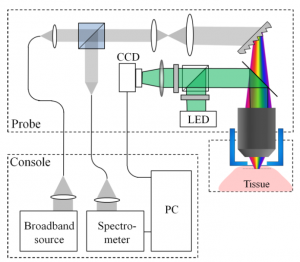No more needles: new device images blood flow non-invasively
Israel Institute of Technology (Technion) researchers have developed a device that provides high-resolution images of red and white blood cells in vivo and does an instant diagnosis ? simply by shining a light on the skin.
By eliminating the long wait time for blood test results, the new microscope might help spotlight warning signs, like high white blood cell count, before a patient develops severe medical problems. The portability of the device could also enable doctors in rural areas without easy access to medical labs to screen large populations for common blood disorders.
As a test, the researchers imaged the blood flowing through a vessel in the lower lip of a volunteer. They successfully measured the average diameter of the red and white blood cells and also calculated the percent volume of the different cell types, a key measurement for many medical diagnoses.
The device relies on a technique called spectrally encoded confocal microscopy (SECM), which creates images by splitting a light beam into a spectrum ? a line from red to violet. To scan blood cells in motion, a compact probe is pressed against the skin of a patient and the rainbow-like line of light is directed across a blood vessel near the surface of the skin.
The blood cells scatter light, which is collected and analyzed. The color of the scattered light carries spatial information, and computer programs interpret the signal to create images of the blood cells at subcellular resolution (.7 micron lateral. 1.5 micron axial).
Currently, other blood-scanning systems with similar resolution exist, but they are far less practical, relying on bulky equipment or potentially harmful fluorescent dyes that must be injected into the bloodstream.
?An important feature of the technique is its reliance on reflected light from the flowing cells to form their images, thus avoiding the use of fluorescent dyes that could be toxic,? says Lior Golan, a graduate student in the Technion biomedical engineering department. ?Since the blood cells are in constant motion, their appearance is distinctively different from the static tissue surrounding them.?
The researchers are working on a second-generation system with higher penetration depth. It might expand the range of possible imaging sites beyond the inside lip, which was selected as a test site since it it?s rich in blood vessels, has no pigment to block light, and doesn?t lose blood in trauma patients.
?Currently, the probe is a bench-top laboratory version about the size of a small shoebox,? says Golan. ?We hope to have a thumb-size prototype within the next year.?

